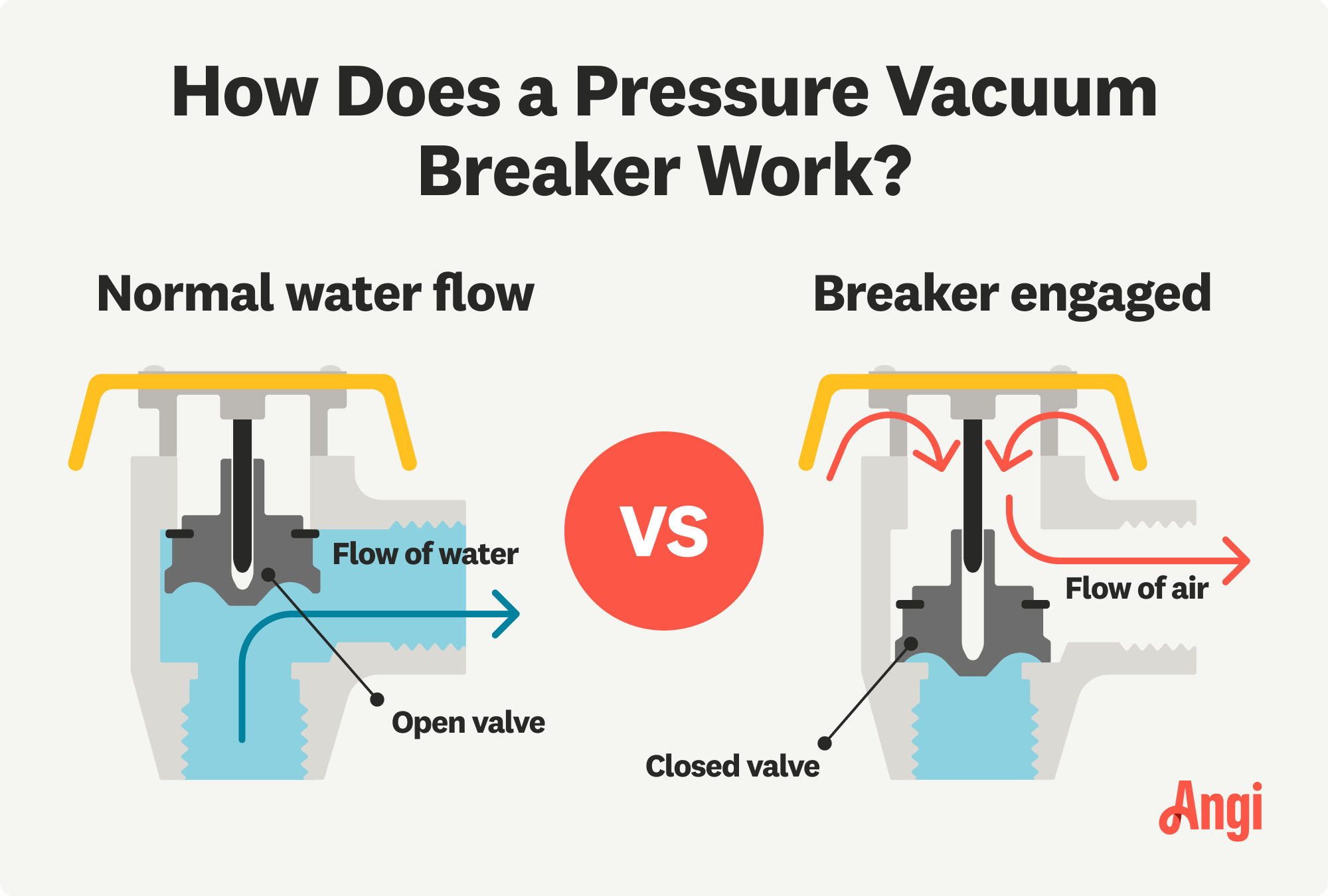
Learn how much plumbers cost in Columbus, Ohio. Discover pricing for faucet repairs, pipe work, and emergency services, plus how you can save money.
Keep your water flowing the right way


Vacuum breakers prevent contaminated water from backflowing into your plumbing system.
Atmospheric vacuum breakers (AVBs), pressure vacuum breakers (PVBs), and hose bibb vacuum breakers (HBVBs) are the three most common types of vacuum breakers.
Backflow water can cause severe contamination and health concerns.
Regular backflow tests can help detect failing vacuum breakers.
Nobody wants dirty water to come back into their home. When a major plumbing issue happens, having a working vacuum breaker can prevent you from dealing with a nightmarish cleanup situation. Our guide explains what a vacuum breaker is, the different types available, and signs of a failing breaker.

A vacuum breaker is a type of backflow preventer that uses air pressure to prevent water from flowing backwards. Water pressure may drop when there is a major leak or water break in the main line. As a result, a vacuum is formed, and the flow of water can be reversed. This is known as the “back-siphonage” process. A vacuum breaker allows air into the system to disrupt the siphon effect.
There are three common types of vacuum breakers:
Atmospheric vacuum breakers (AVBs): Consist of a check valve and an air vent. Often installed on outdoor faucets.
Pressure vacuum breakers (PVBs): Rely on a spring-loaded check valve to operate under high pressure. Often installed in sprinkler systems.
Hose bibb vacuum breakers (HBVBs): A removable anti-siphon valve that can be screwed directly onto outdoor faucets.

It will be too late when contaminated sewage water floods your property. Fortunately, there are clear signs your vacuum breaker may be failing:
Water leaks: If you notice a frequent, ongoing leak at the base or around the valve, don’t ignore it.
Water pressure change: A sudden drop in water pressure in your faucet or sprinkler system could indicate a problem.
Unpleasant odor or taste: If you notice an unpleasant odor or taste in your water, a backflow might already be happening. Check your vacuum valve immediately.
Dry or brittle seals: Damaged seals should be replaced to keep your vacuum breaker operable.
Hissing or popping sounds: A leaking vacuum seal could lead to hissing or popping sounds in your pipes.
Hire a local plumber if you need to inspect, service, repair, or replace AVBs and PVBs. For HBVBs, you can detach and replace them with new ones yourself fairly easily. Sometimes, you may only need to replace the aging seal instead of getting a whole new vacuum breaker.
The interior parts of a vacuum breaker typically last between 5 and 10 years. To catch failing parts early on, you should have your vacuum breakers inspected at least every three years. For vacuum breakers on your sprinklers, hire a sprinkler technician for the job.
From average costs to expert advice, get all the answers you need to get your job done.

Learn how much plumbers cost in Columbus, Ohio. Discover pricing for faucet repairs, pipe work, and emergency services, plus how you can save money.

Learn about main water line repair costs in Columbus and what affects pricing to be prepared before you start getting estimates.

Discover the leading factors affecting your main water line replacement cost in Columbus, including length, material selection, and installation details.

Replacing or upgrading plumbing in your home? Make sure you know how to measure pipe size accurately to avoid buying the wrong materials.

If the temperatures plummet below 20 degrees, you should pay attention to your home’s pipes. Learn what to do if pipes freeze, and how to prevent them from bursting.

Finding frozen pipes involves using all of your senses to listen for, smell, and see the signs. Keep reading to learn how to find frozen pipes in your home.